Nissan unveils Interstar-e large electric van
Through its alliance with Renault, Nissan is launching an Interstar with an electric drive for the first time. The “newcomer” is based on the same platform as the fourth generation of the Renault Master E-Tech, which the French company unveiled in November. Both large vans are equipped with a 40 or 87 kWh battery, with Renault’s range initially stated as 170 and 410 kilometres depending on the battery size, while Nissan’s range is 200 and 460 kilometres according to the WLTP. However, an update on the Renault Transporter published a few days ago sets the record straight: according to this, the French sister model also achieves up to 200 and 460 kilometres.
Nissan has not yet commented on the electric motor in its written presentation of the model. The Renault Master E-Tech is known to come with a 96 or 105 kW unit in future. The figures for the Nissan are likely to be identical. For comparison: the current, third-generation Master van only offers an output of 57 kW and a battery capacity of 52 kWh for a “real-world range of up to 200 km”.
Nissan states that 252 kilometres (large battery) or 200 kilometres (small battery) can be recharged in 30 minutes with fast charging. The charging time for 10 to 100% SoC at AC charging points should be less than four hours. Nissan does not specify the actual charging capacities, but Renault does: the 130 kW DC and 22 kW AC are undoubtedly also valid for the Japanese manufacturer’s model.
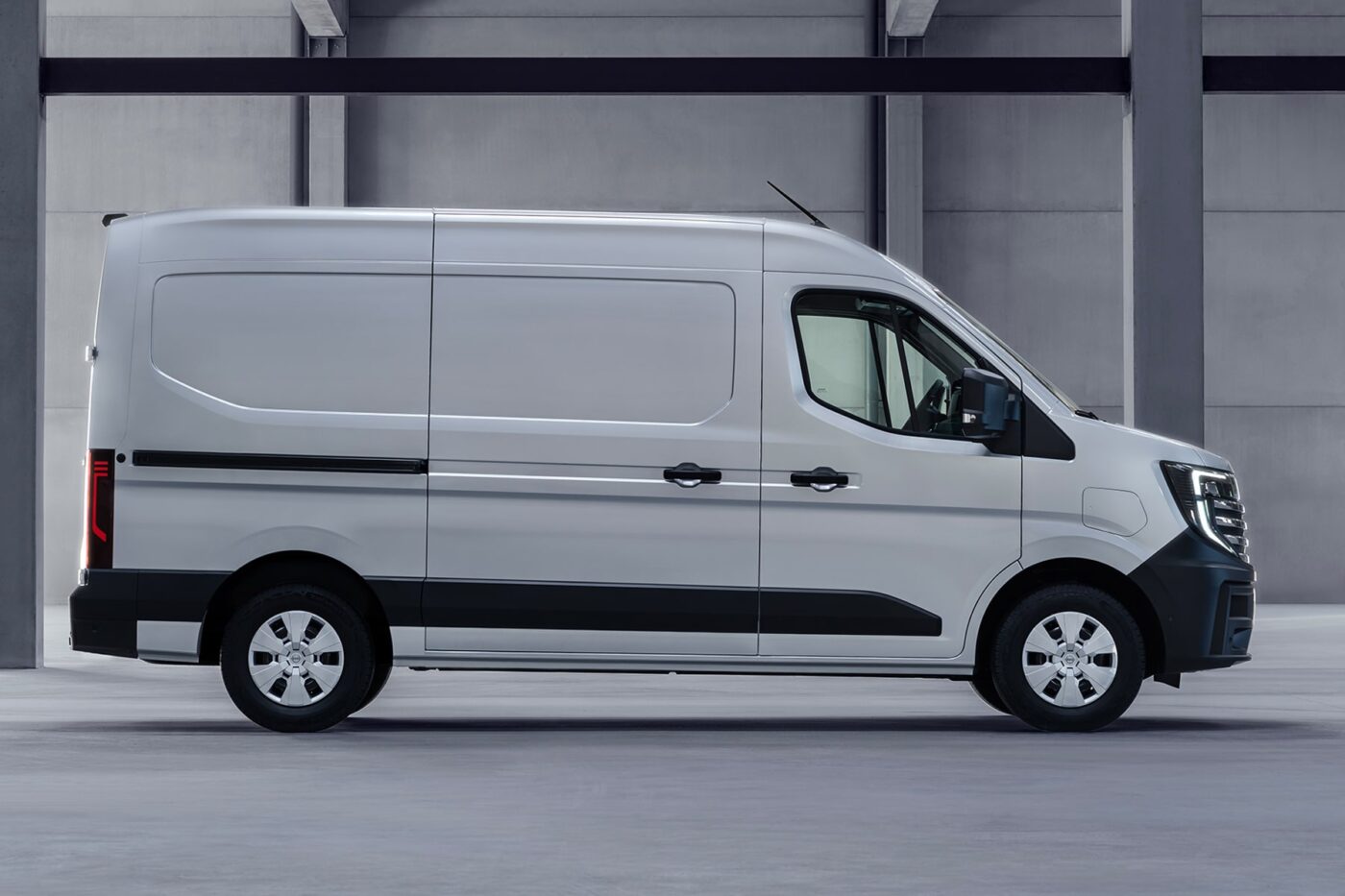
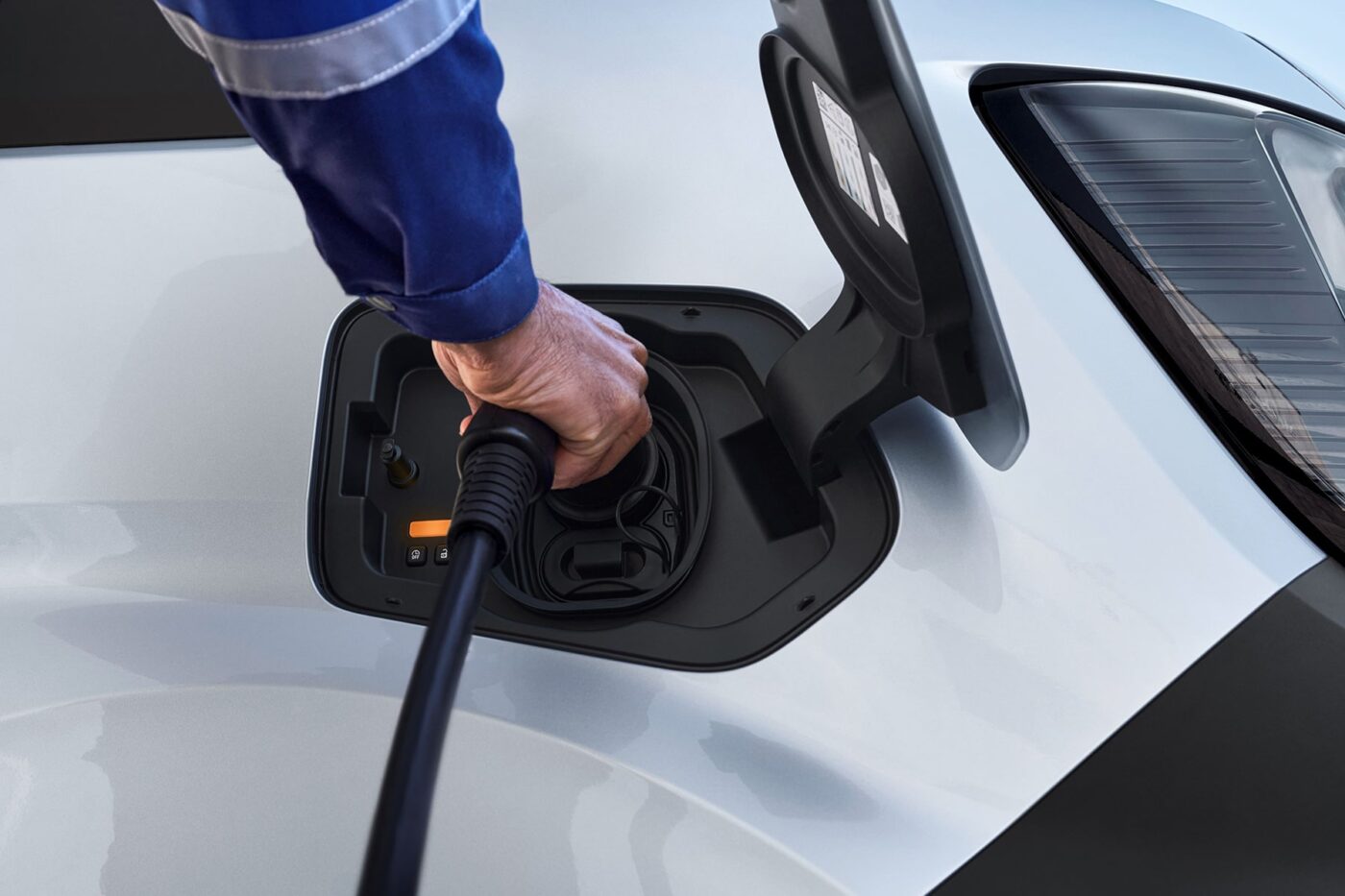
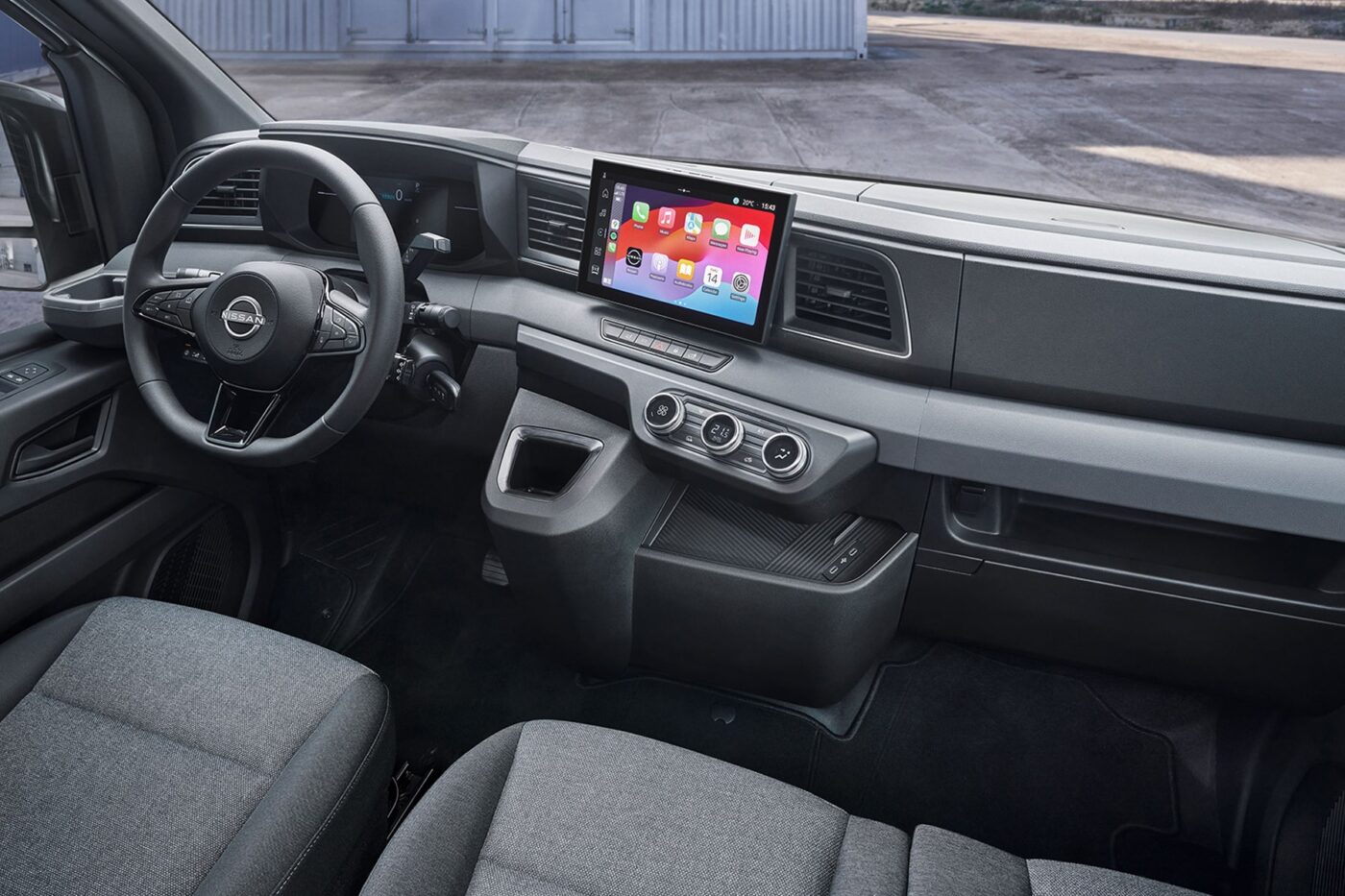
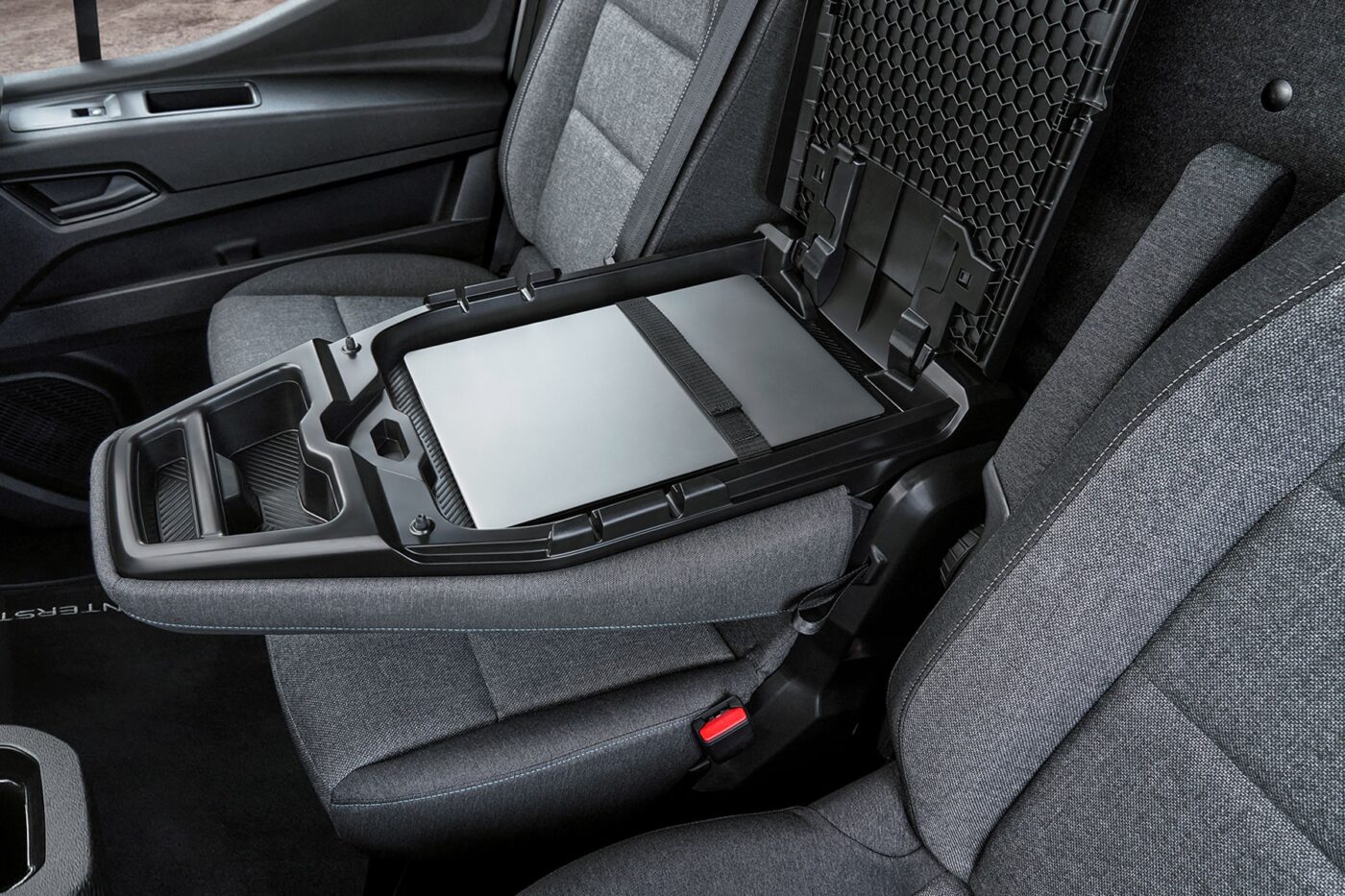
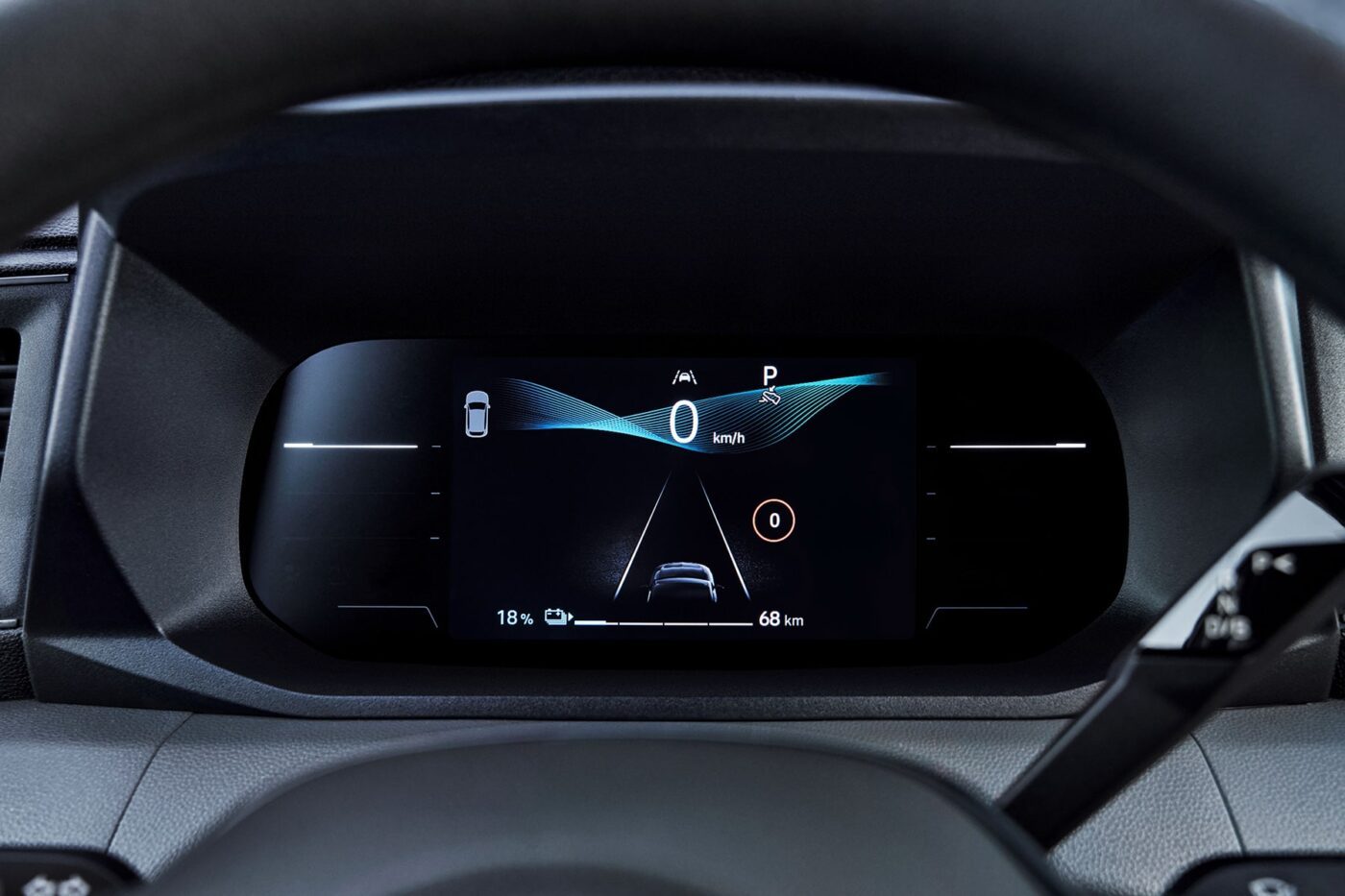
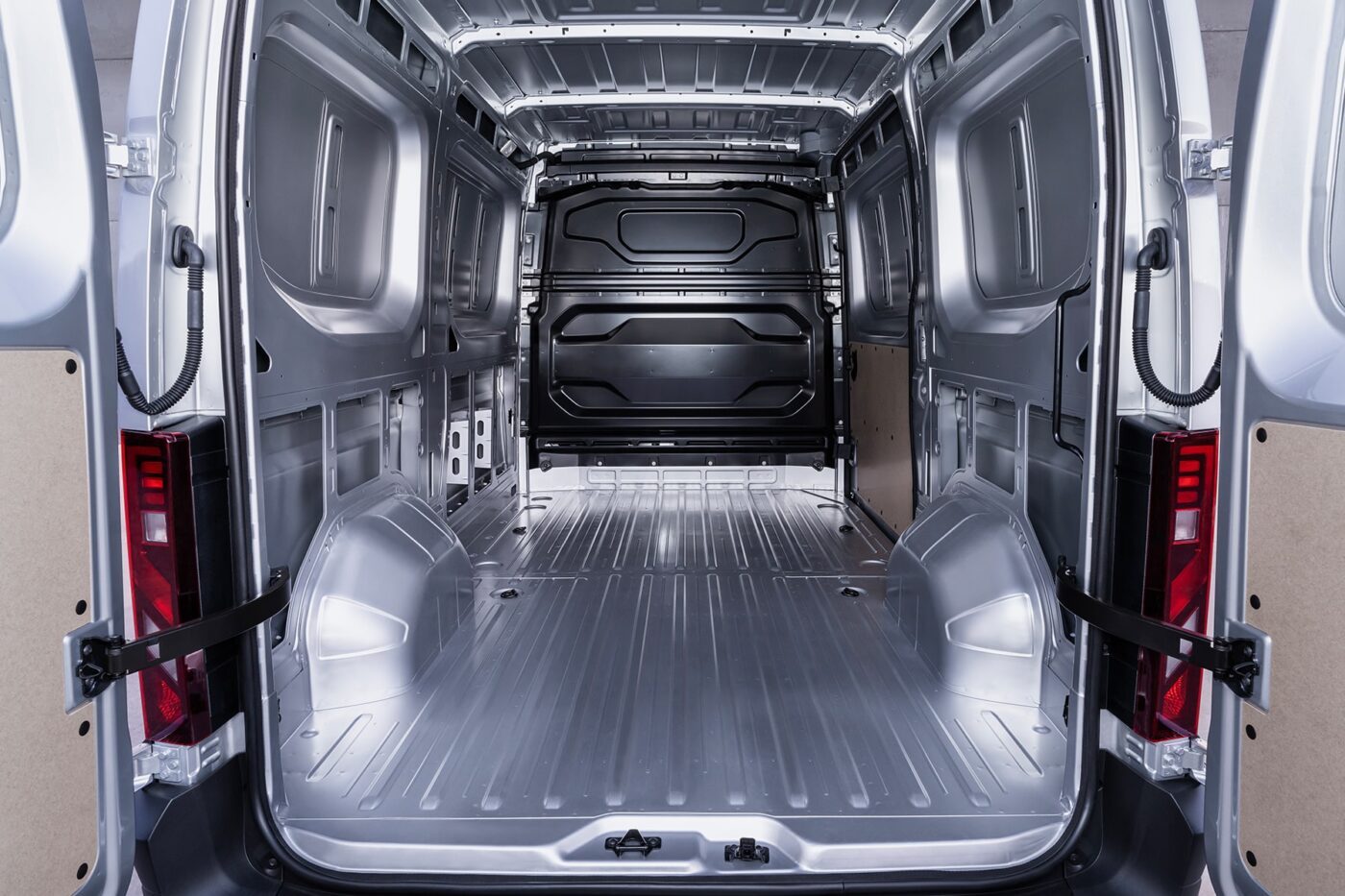
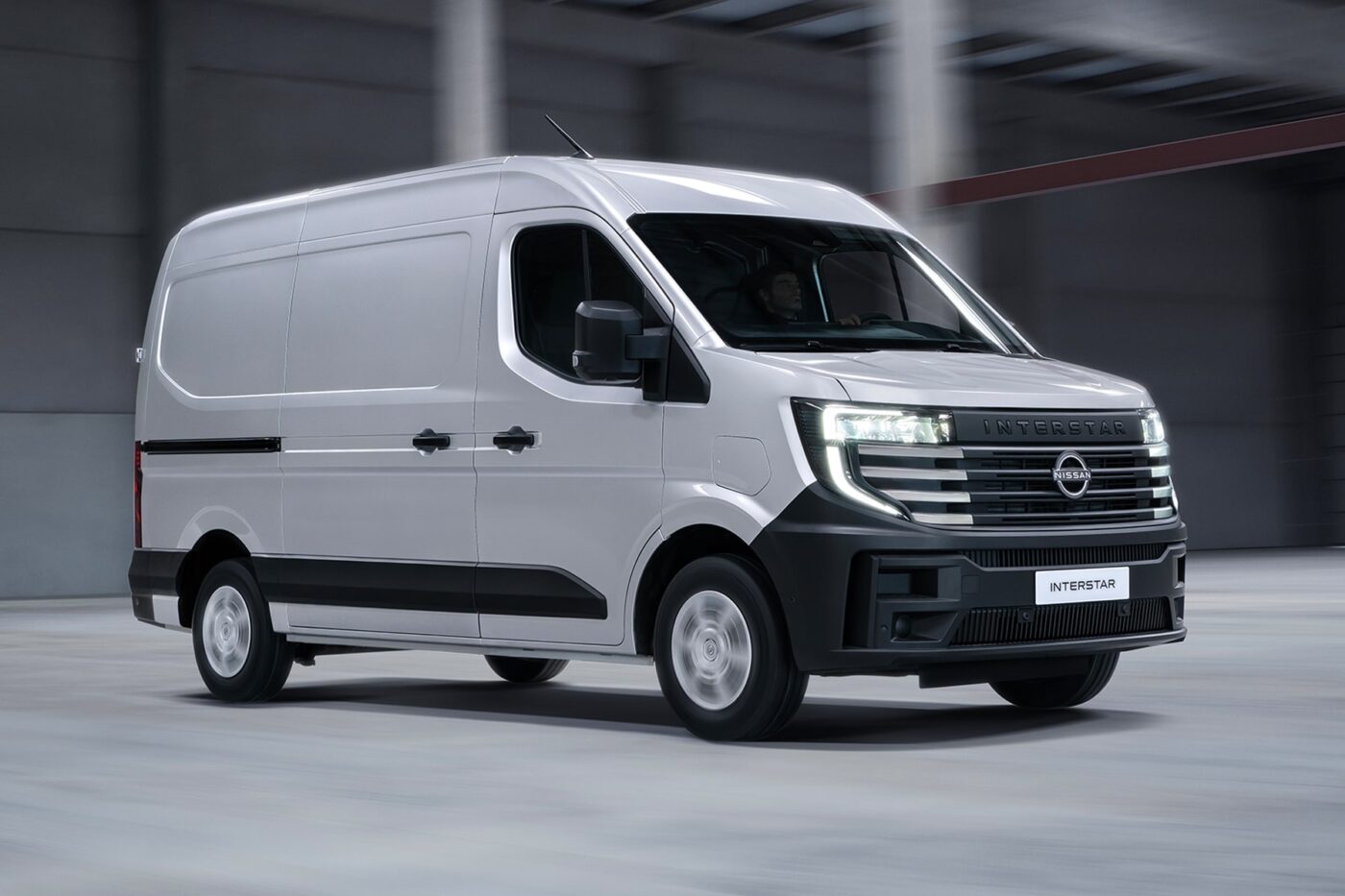
The permissible total weight of the Nissan electric transporter is four tonnes. The company puts the maximum towing capacity at 2.5 tonnes and the maximum payload at up to 1.6 tonnes. Compared to its (combustion engine) predecessor, the new Nissan van offers larger dimensions, improved aerodynamics (“air resistance reduced by 20 per cent”) and more customisation options. The Japanese company offers a “wide range of conversions for the model ex works, including tipper, flatbed and panel van”, as stated in the press release. As a panel van, the Interstar-e has a four-centimetre wider side door and a 10-centimetre longer loading area. The turning circle is reduced by 1.5 metres. These are all details that we already know from the Renault. Nissan does not specify the load capacity in cubic metres. Once again, however, it is likely to be the “eleven to 22 cubic metres” that the Master E-Tech also offers, depending on the equipment variant.
Speaking of equipment: Nissan is talking about a revised interior with, among other things, hard-wearing seat covers, heated seats and a heated windscreen as well as an improved infotainment system. According to the Japanese company, all variants of the new Nissan Interstar are also equipped with a range of safety systems, including emergency brake assist, a fatigue warning system, a tyre pressure monitoring system and a trailer stabilisation system. A so-called 1-box braking system is also designed to “ensure ideal braking performance regardless of vehicle weight”.
Nissan offers a standard warranty of five years or 160,000 kilometres on its new van and eight years or 160,000 kilometres on the high-voltage battery. Pre-sales of the new Nissan Interstar are set to begin in spring, with deliveries of the first units to follow in the summer. Nissan aims to have fully electrified its van model range by 2026 – “the new Nissan Interstar-e will play a key role in this,” says the manufacturer.

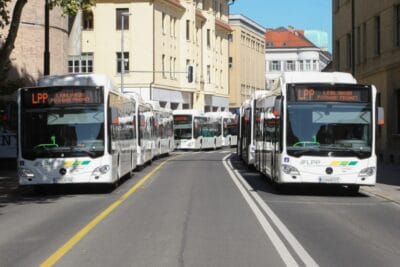
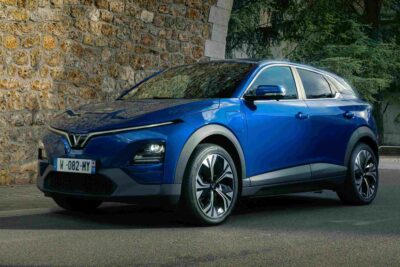
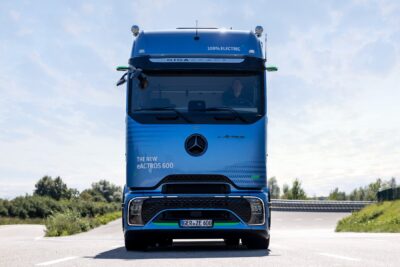
0 Comments